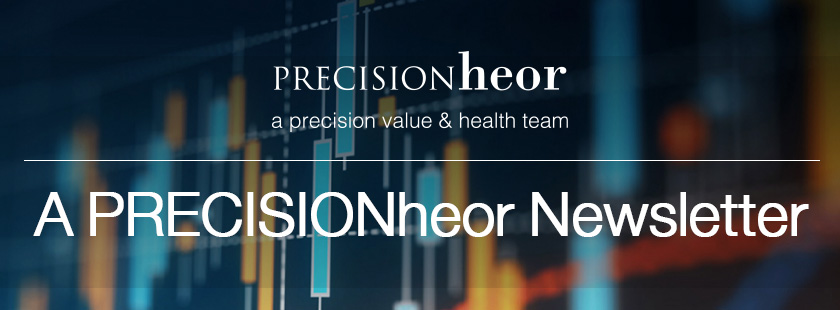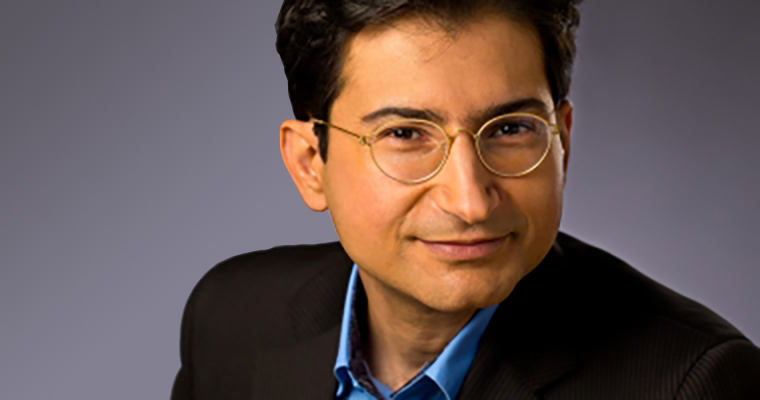The High Leverage Outlier sits down with PHE Chief Scientific Officer Darius Lakdawalla to discuss novel sources of value, value assessments, and his upcoming ISPOR issue panel addressing state-of-the-art approaches to conducting decision analysis in healthcare.
Q1: As an original founder of Precision Health Economics, what do you believe makes PHE different from other HEOR consultancies?
PHE is committed to cutting-edge research that pushes the boundaries of science while addressing our clients’ most difficult challenges. PHE brings together a team of full-time methodological experts who are experienced consultants in HEOR and policy research, with an elite network of scientific advisors from the nation’s leading universities and research organizations. Working together, PHE researchers offer cutting-edge insights and approaches to our clients.
Q2: You pioneered the concept of the value of hope in cancer care. What is this concept and why should it matter to stakeholders like payers and policy makers?
Some of the predictions of cost-effectiveness analysis seem at odds with real-world patient behavior. One specific issue is that conventional cost-effectiveness analysis implies that patients should care only about the average effects of healthcare technologies. However, it seems more likely that patients care about what might happen to them if they end up being above average or below average. For example, some cancer therapies provide substantial survival gains to a modest fraction of patients, but smaller gains to most of the others. Health economists would focus exclusively on the typical or average treatment effects of these therapies, which may be small, but patients themselves might care a lot about the chance they might get at long-term survival.
We did a study to examine whether cancer patients with poor prognosis systematically preferred to take risks on therapies that gave them a chance for long-term survival. We found that overwhelmingly—in approximately 70% to 80% of cases—these cancer patients with poor prognosis preferred hopeful therapies that gave them a chance at long-term survival, even when compared with other treatments that offered the same average treatment benefits. This was a remarkable finding, since conventional economic theory implies that they ought to have no preference between the 2 alternatives. These results were published in a special issue of Health Affairs on value in cancer care.
This concept of the value of hope is important because it helps us move the quantitative tools of cost-effectiveness analysis closer to the perspectives of real-world patients. Too often, health economists have focused on theories for what patients value that have not been subjected to real-world tests. With the shift today toward more patient-centered care, it seems natural to move toward patient-centered health economics as well. We believe that patient-centered assessments of value represent the future of health economics.
Q3: As a member of the ISPOR Special Task Force on US Value Assessments, you recently published a series of recommendations in a special issue of Value in Health. What is the importance of this task force and its examination of healthcare value?
There has been a lot of interest recently in strategies to measure value. Several organizations have developed frameworks for measuring value. This makes a lot of sense because, quite frankly, there is too little information on value available to some decision makers, especially patients, providers, healthcare systems, and even some smaller payers. The challenge has been that many of the existing value frameworks are built in a rather ad hoc way and without any strong conceptual foundation.
A primary objective of the ISPOR task force was to understand the foundations of value assessment in health economics, looking at the field not just as it existed 20 years ago but as it has evolved over time. The task force considered the state-of-the-art approaches to measure value and assessed how these approaches and insights may be used to improve value frameworks.
One of our primary conclusions was that value frameworks should result from a careful and systematic understanding of economic principles to ensure that these frameworks are rigorous enough to use as the basis for decision-making. The task force has also identified a number of novel components of value that should be incorporated into assessments, such as the value of hope, insurance value, option value, and the value of reducing infectious disease risk. This results in a more expansive view of value that can be useful to a variety of stakeholders.
I think this is the importance of the task force’s work—it’s designed to put value frameworks on a firmer conceptual footing and also to make the conclusions of these frameworks more valuable to a broad base of healthcare stakeholders.
Q4: You recently led economic research on the insurance value of healthcare innovations published in the Journal of Public Economics. What is the relevance of this research for manufacturers of innovative treatments?
Conventionally, economists have thought about value from the perspective of patients using medical care, and this makes a lot of sense because patients are, in fact, the most direct beneficiaries of medical care. But one limitation of this approach centers on the fact that, while patients are the users of medical care, it’s consumers who aren’t yet sick who pay for most of it. This may be in the form of health insurance premiums for private health insurance or tax payments into public health insurance. So, the relevant question is not “How does a patient who is currently sick value a medical technology?” but instead “How does a consumer who is financing healthcare and faces the risk of becoming a sick patient in the future value the technology?”
We think the best analogy for the latter group comes from insurance. Medical technology functions much like an insurance policy. In much the same way that an insurance policy mitigates damages of an unfortunate outcome—let’s say of an earthquake or a fire—new medical technology limits losses that patients will face in the event they are hit with an illness. Insurance policies are valuable to people even if they are never used because they minimize risk. This means that medical technologies are valuable to people even if they are never used, because they create peace of mind, just like insurance policies.
This can be quantified using fairly standard economic methods. We showed that this insurance value feature of medical technologies is quite important and, in fact, when you look at the most severe kinds of illnesses where risk is greatest and insurance is the most valuable, accounting for insurance value can double, triple, or quadruple the total value of a medical technology. More importantly, this finding has implications for the way we rank medical technologies. It means that we have likely been underinvesting in treatments that address highly severe conditions with unmet need and potentially overinvesting in treatments for milder conditions. Some concrete implications of this research are that we may need to think very carefully about whether we are investing enough in treating advanced cancer or treating rare diseases with few alternative treatment options. These findings can help decision makers prioritize limited healthcare resources.
Q5: At the ISPOR 2018 Annual Meeting in Baltimore, you will be moderating an issue panel titled, “Should We Move Beyond Conventional Cost-Effectiveness Analysis? If So, How?” Why should ISPOR participants attend?
This panel provides an opportunity for ISPOR participants to hear luminaries in health economics speak about today’s most pressing and challenging problems in healthcare decision‑making and decision analysis. Attendees will learn about the state-of-the-art approaches to conducting decision analysis in healthcare, what methods are still in development, and how we can put together the different approaches that are used by health economists to study value.
Dr. Chuck Phelps (University of Rochester) is a pioneer in the health economics field. He will join us to talk about his pathbreaking work in multicriteria decision analysis, and how it can be used to push the frontiers of healthcare technology analysis. Dr. Peter Neumann (Tufts Medical Center), as many people know, was the co-chair of the Second Panel on Cost-Effectiveness in Health and Medicine. Dr. Neumann will speak about contemporary challenges to cost-effectiveness analysis, and the path toward addressing them. Dr. Jeroen Jansen (Innovation and Value Initiative and Precision Health Economics) is an authority in economic decision modeling and evidence synthesis. Dr. Jansen will speak about the potential for flexible, open-source value assessment models to benefit from the advantages of both cost-effectiveness analysis and multicriteria decision analysis. It should be a lively and enlightening discussion with some of the greatest minds in this field.
Q6: What major developments impacting the healthcare policy landscape should be on everyone’s radar?
Within healthcare delivery, there has been a sea change and a long overdue shift in focus toward patient-centered care. This hasn’t yet, I think, reached the methods of health economics, but I believe this is about to change. The methods now are in place to incorporate a more patient-centered approach that is more attentive to the empirical facts regarding how patients make decisions and how patients perceive value. I think the next 10 years are going to bring major breakthroughs in the way we incorporate patient values and preferences into health economics and into healthcare value assessments more generally. I look forward to seeing progress in this area, which I believe can revolutionize the way we deliver healthcare and make value-based healthcare decisions.


